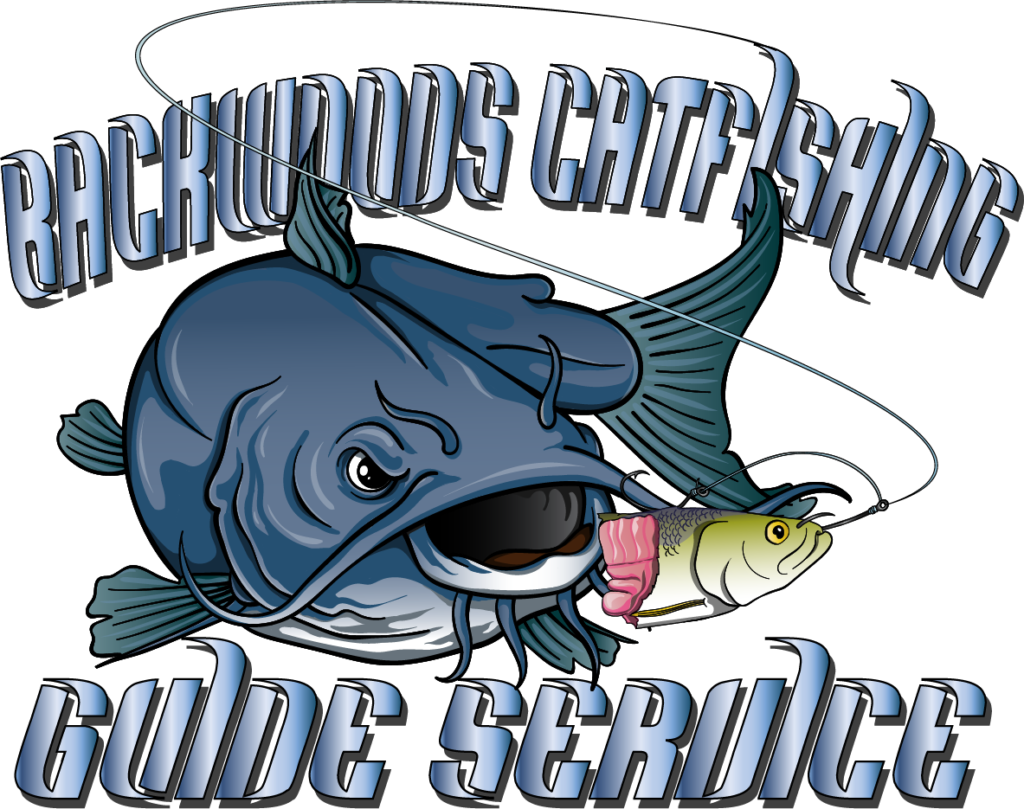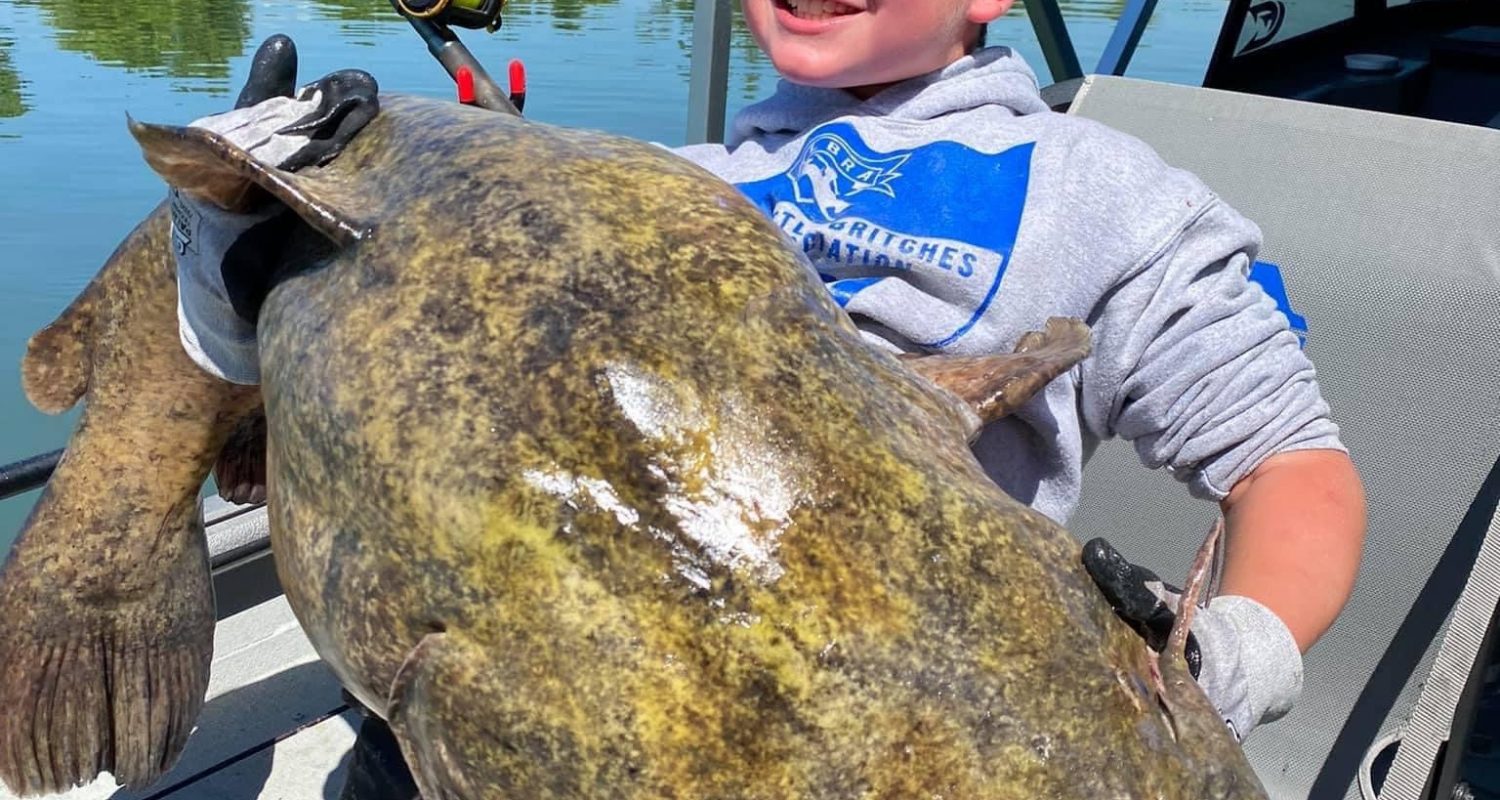Flatheads differ greatly from Blue cats and channels both in Habitat and bait. That’s the story you’ve always heard right, well it’s a lie! Let’s dive into this a little more to see why you’ve been potentially fishing for flatheads wrong all along.
Everyone’s heard it before, you have to have live bait to catch flatheads. This urban legend has been circulated more than the mythical Volkswagen sized catfish that live at the dam. While catching flatheads on live bait is a common practice, you could be missing out on the big one by doing so.

What I prefer for bait.
I have been guiding for big flatheads and tournament fishing for many years now and the story is always the same for me. Fresh cut bait is king! Specifically fresh Skipjack. I rarely use live bait unless I’m trying to irritate a fish into biting, which is very rare. These fish have incredible sense of smell to the point, I’m very careful to possible scents on my hands. 99.99% of the time I can cast a big piece of cut Skipjack and a live shad, bluegill, bullhead, carp, etc; right next to each other and the skipjack is going down first. But this isn’t the only myth about these fresh water apex predators you’ve heard.

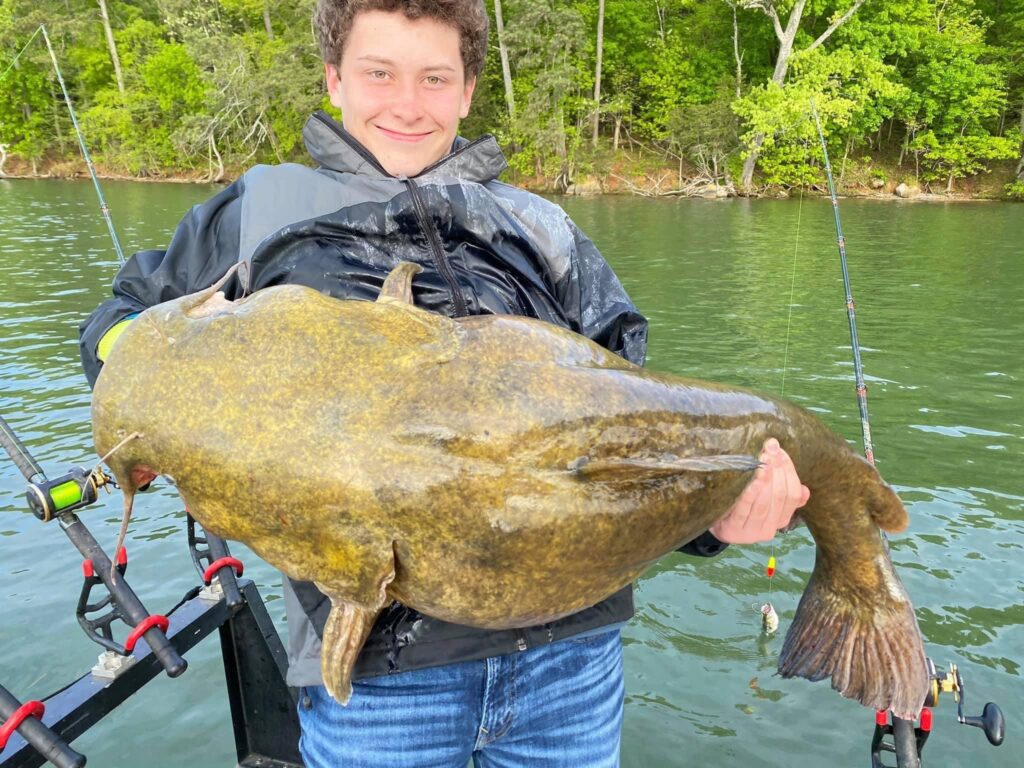
Location, Location, Location
Most fisherman that target these fish often choose to setup on some sort of wood cover. Downed trees, logs, brush piles, etc. while all these are usually great options there are several other areas and factors that I consider before casting the first bait. Some of favorite areas to fish are rocky shelves, boulder fields, creek mouths, bends, ledges, and mud flats. All of these areas are very common for the biggest species of catfish in Alabama, the Bluecat. Catching both Flatheads and Bluecats in the same spot happens all the time for us. Sometimes both fish going over 50lbs each. When I’m choosing a spot for flatheads I don’t rely on my fancy electronics very often except to locate under water structure. Learning to read the river is your greatest asset here and is why that old man in the 12ft jon boat is your biggest threat at the tournament. Being able to watch current flow and understand how things move in current is the first step in busting a true monster. These fish are predators and will lay motionless for days waiting on a fish to get close enough to engulf them. They will lay on current seams, behind and inside trees, or anything else the provides a current break for them.
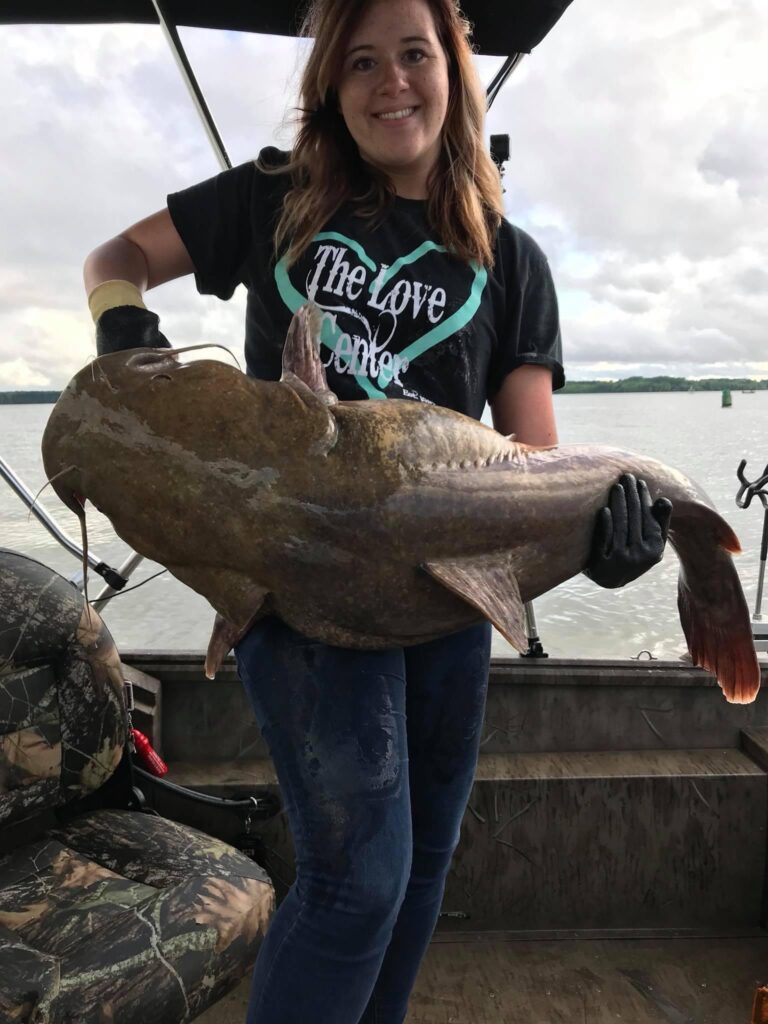

Catching flatheads really is an art form that takes a lot of trial and error to catch trophies consistently. A trophy Flathead to me is 50+lbs. I’m not happy with myself if a client doesn’t catch at least 1 of these every single day. The most trophy flatheads we’ve caught in 8 hours was 5 ranging from 51lbs-70lbs and picking your locations wisely is your foundation. But yet again that’s not the biggest lie of them all!
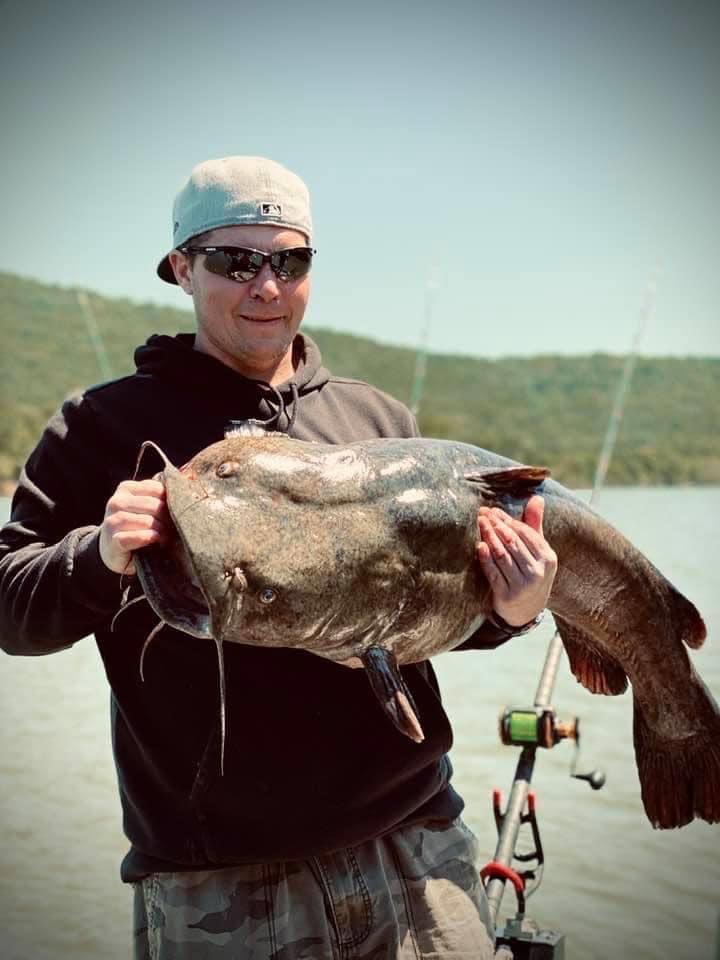
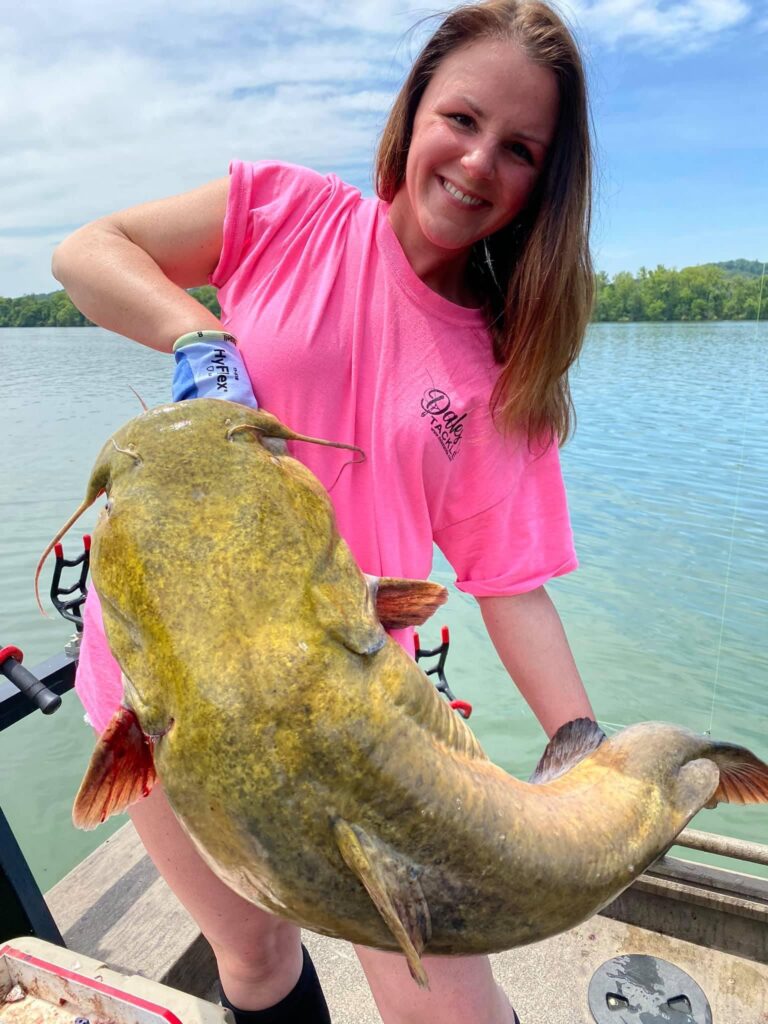
When Do I Prefer to Fish?
Bottom line, in the middle of the day under direct sunlight. Now this is going to throw some guys off especially my Northern Flathead guys. Countless times I’ve been doubted on catching these fish in the day or people telling me they thought they had to fish at night for them. While we catch big flatheads at night targeting mud flats, shorelines, and ledges, the truth is they spread out so much after dark and that’s why I prefer daytime, I know where they are going to be! During the day these fish relate to as mentioned earlier: trees, rocks, ledges, holes, etc. These fish are not dormant during the day. They will eat just fine, you just have to get the bait to them. This is the most important thing. These fish do not want to travel far to eat during the day. They’re not hunting in the middle of the day like they do at night. They are resting and ambushing. Countless times we’ve hit a trophy fish in the head with the bait before we can even pick up a 2nd rod to cast. For example, If I am fishing a rock pile, I’m trying to get baits in front, behind, on top of, and on the sides of that rock pile. This covers the area to increase my odds of getting close enough to the fish.
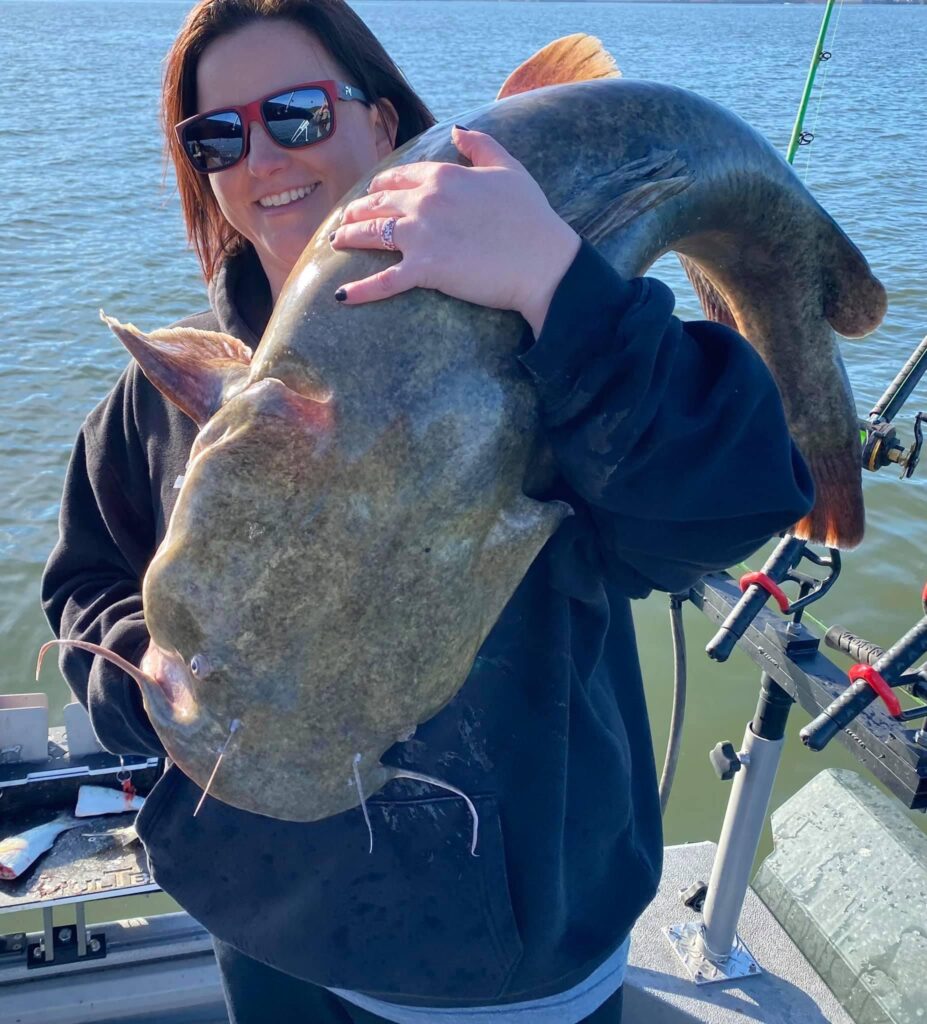
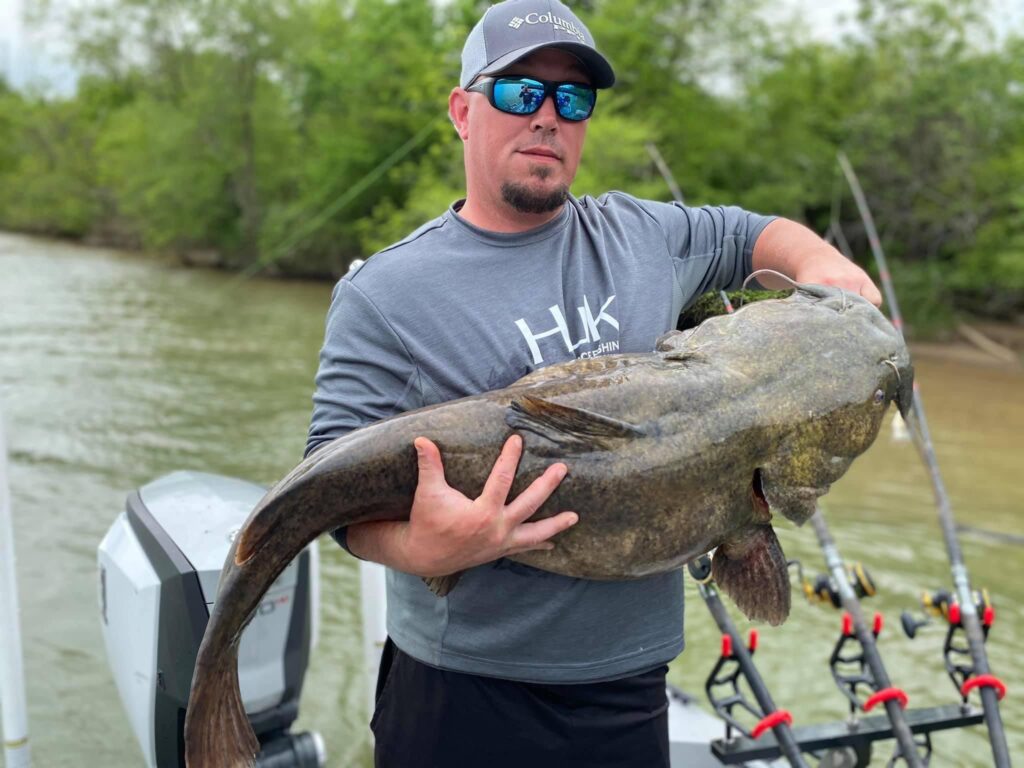
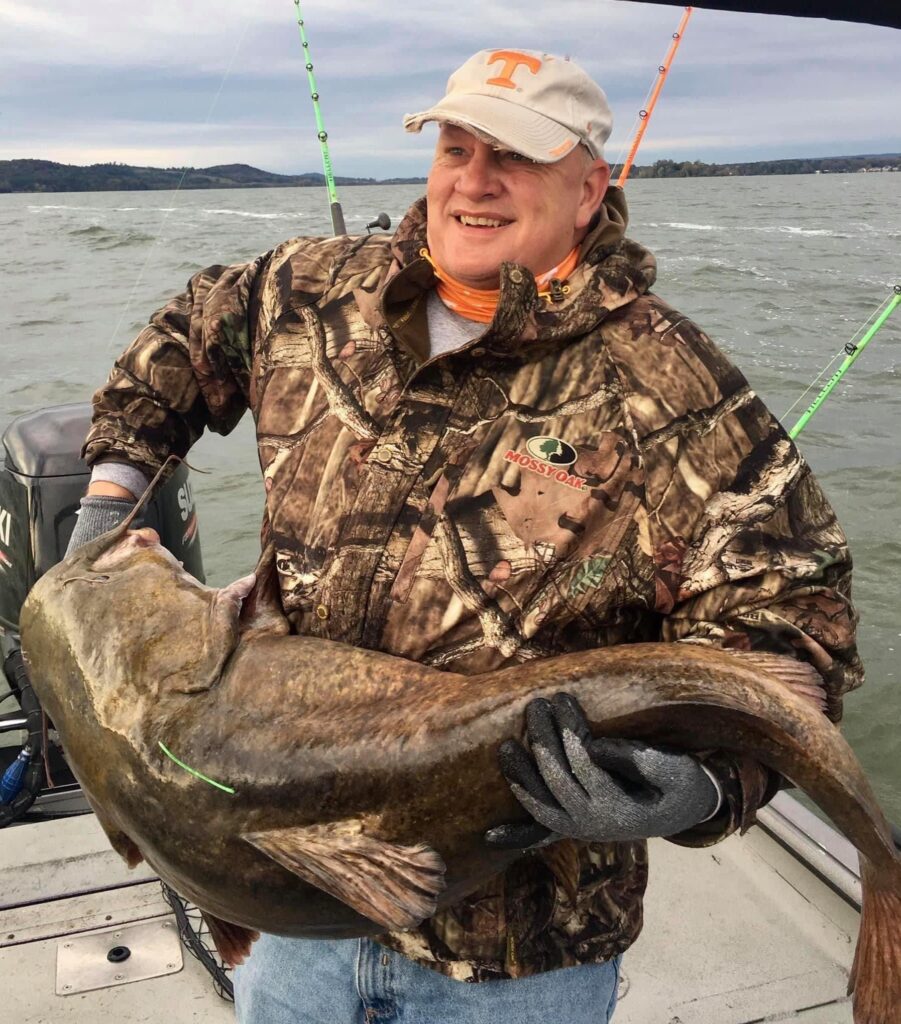

Behavior
While these fish are lazy during the day, they are extremely aggressive. We hardly see the classic Flathead bite, where he may play with it before eating it. 9/10 times he’s gonna smoke the rod with no warning and you better hope the drag is set right or have it tight enough you can turn him away from the tree he’s headed for. We don’t want to break off a potential state record fish. But if he makes it to those trees, it’s game over.
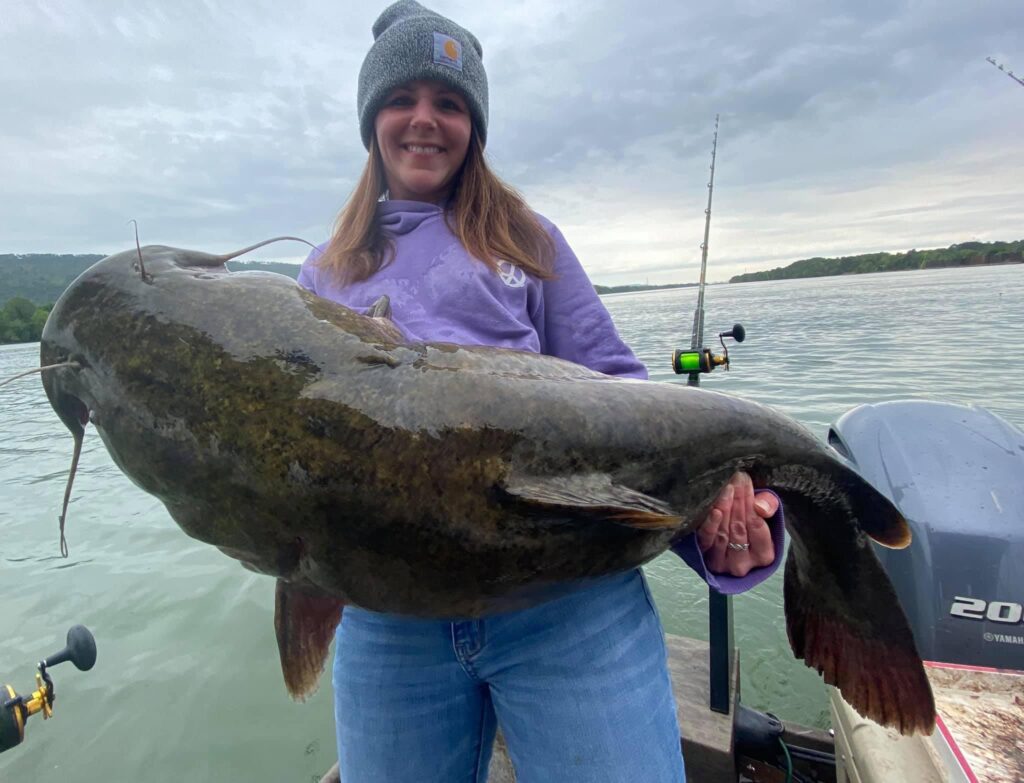

Flatheads are very territorial. While this is true for them in general. There is some misconception to this rule. Trophy flatheads do not like other trophy flatheads near them. We’ve never caught 2 50lb flatheads in the same spot at the same time. We’ve caught a dozen flatheads in 1 spot in 30-45 minutes but never more than 2 big ones. If we pull up to an area and start catching 10-20lb fish fast. I’ll tell my clients to get ready there’s a big one in there and usually he will bite. They do not feel threatened by smaller flatheads around them but they absolutely do not want other big flatheads in their home. The opposite happens with blues. A big Flathead doesn’t seem to care if a big blue is in the area for whatever reason. Our biggest bag of mixed species in a spot is a 62lb flat and a 71lb blue. But those mixed trophy fish happen a lot. As soon as we catch a big Flathead, take pictures, and release him. I’m reeling in rods to hit the next spot. Don’t burn hours sitting on one spot waiting. For me the big one usually eats in 20 minutes or less.
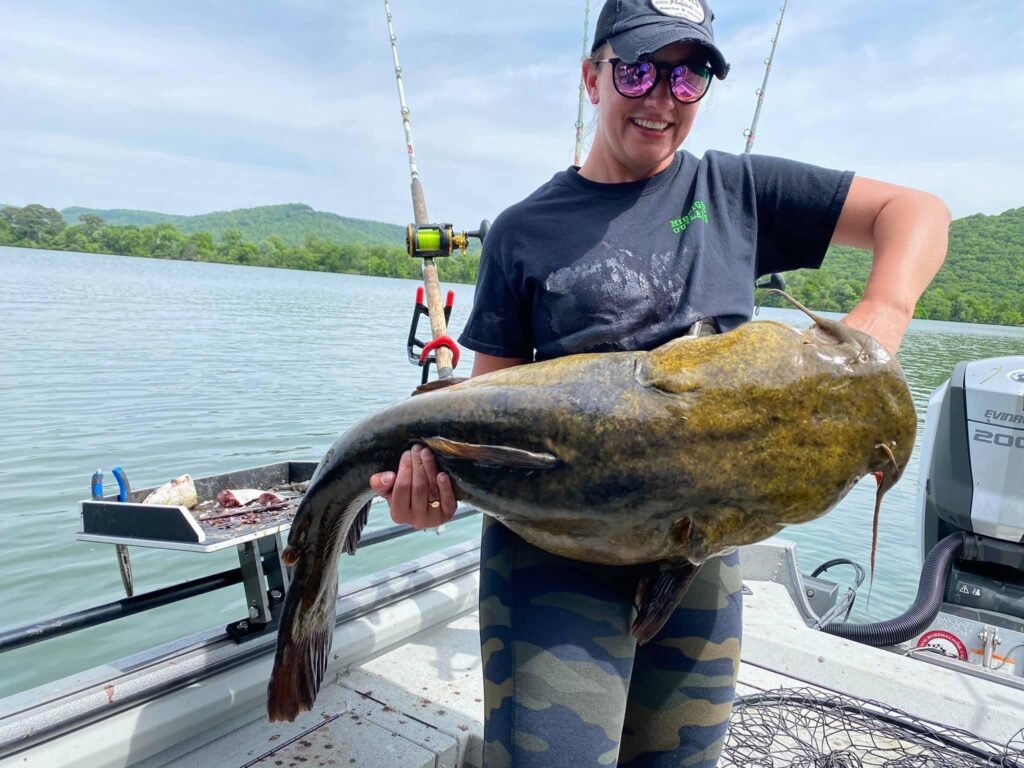
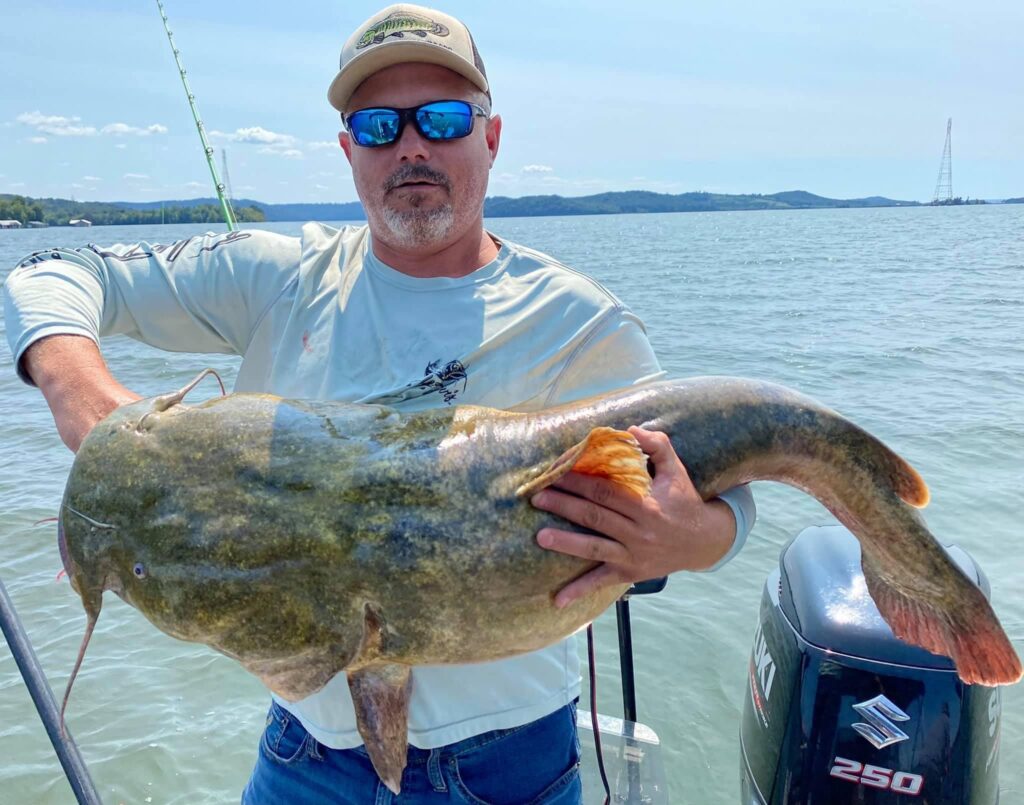

Conclusion
I hope you can take something away from this article and how I approach flatheads on the Tennessee River. Apply this to your home waters and see how it works for you. Cause you never know what could happen. It’s a proven system that works for me and my guide service. If you want first hand experience with this or would like to setup a guide trip with me, I will leave my contact info at the bottom of this article to do so. Until then good luck out there and tight lines.
-Capt. Josh Brown
Backwoods catfishing guide service
Backwoodscatfishing@gmail.com
Backwoodscatfishing.com
